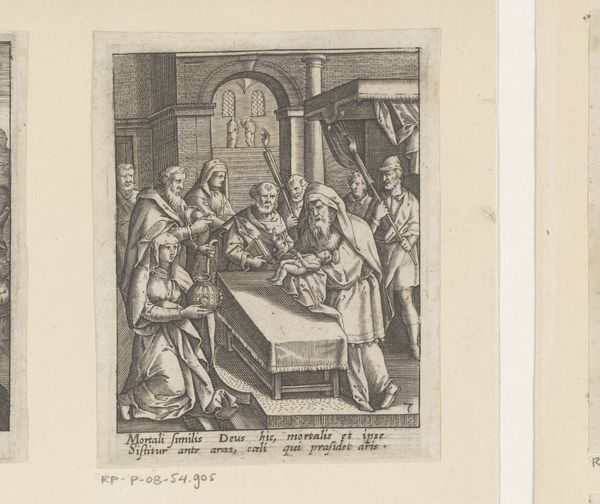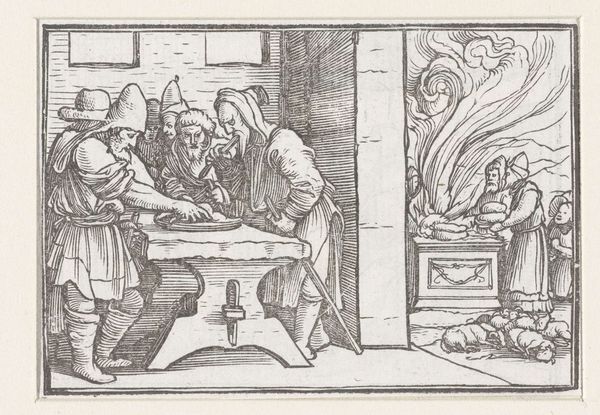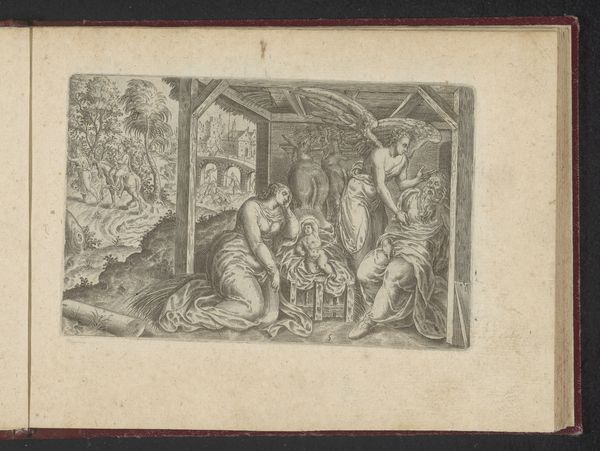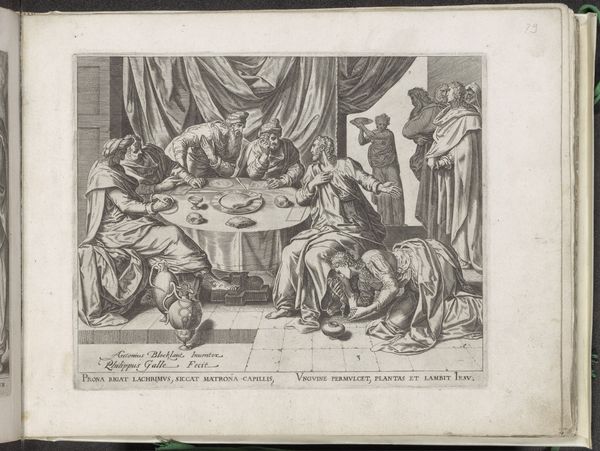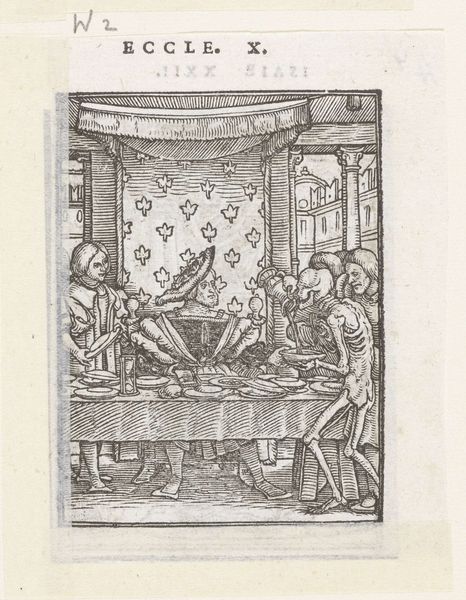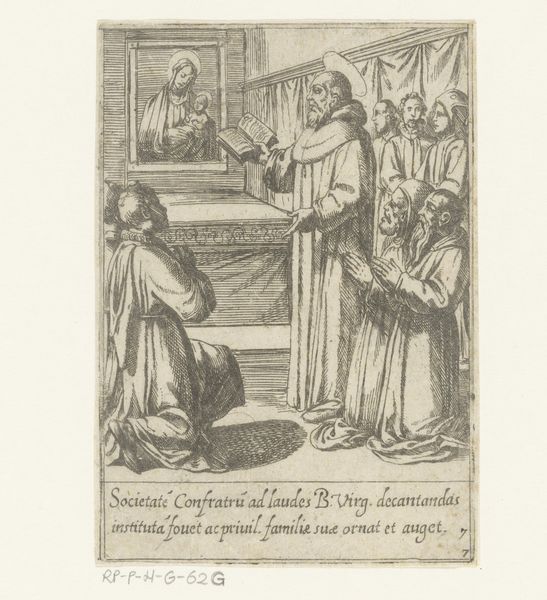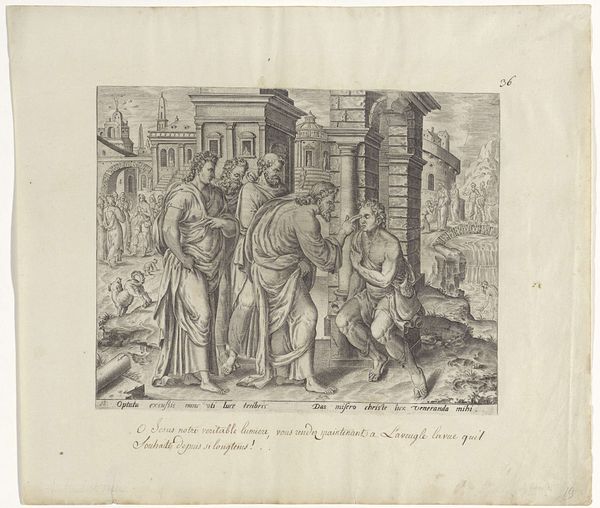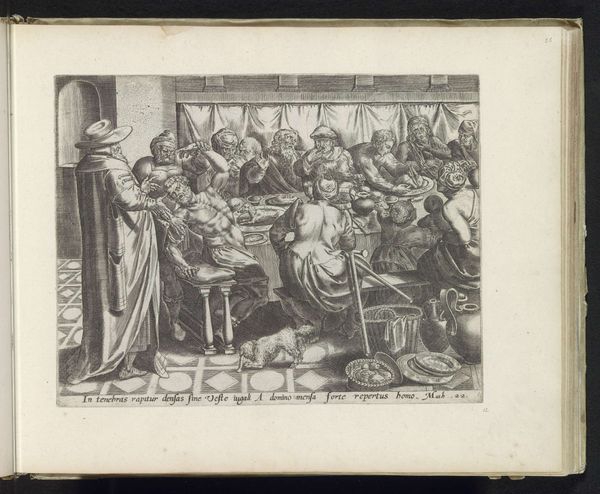
print, woodcut, engraving
#
medieval
# print
#
figuration
#
woodcut
#
line
#
genre-painting
#
history-painting
#
northern-renaissance
#
engraving
#
realism
Dimensions: height 60 mm, width 85 mm
Copyright: Rijks Museum: Open Domain
Curator: Let’s have a look at "Josia viert Pesach," created around 1522. It's currently held in the Rijksmuseum and made using woodcut and engraving techniques, but looking at it now, I mostly see a bustling sort of severity, do you agree? Editor: Yes, that strikes me too! There is so much visual information conveyed with so little tone, but all that compressed linear detail really contributes to this air of serious labor. This work illustrates the biblical story of King Josiah celebrating Passover. He re-instituted its observance after a long period of neglect. We see two separate but related scenes, almost staged for our viewing. Curator: It’s this splitting into separate but connected spaces that intrigues me. On the left, there's this incredibly graphic depiction of animal sacrifice – look at those huddled sheep, juxtaposed with people carefully layering flatbreads near the enormous bonfire. A powerful image about the dedication to rituals! Editor: Absolutely. What's interesting here is the representation of a public, political act within a specific cultural context. This image would have circulated widely as a print, solidifying the idea of religious renewal and the leader's role in it. Curator: It makes me wonder, too, about the artist's intent. Is this reverence, pure instruction, or perhaps some subtle social commentary tucked away within the clean, precise lines? The work almost asks, "What rituals bind us and what do they demand?". I see many interpretations of piety here. Editor: That reading is insightful. Also note how this print style became really influential with the Reformation and Protestant imagery, which harnessed the easily distributable and visually potent medium. Its crisp directness certainly carries an inherently reformist vibe. Curator: The precision is powerful but cold; it pushes you into pondering these deeper meanings that would otherwise have stayed below. You are left thinking about more than just the action being portrayed; it lingers far longer than it should. Editor: Exactly! It highlights the social dimensions of religious practice, making you think of faith, leadership, and cultural values, rather than the intimate details of the depicted observance itself.
Comments
No comments
Be the first to comment and join the conversation on the ultimate creative platform.
